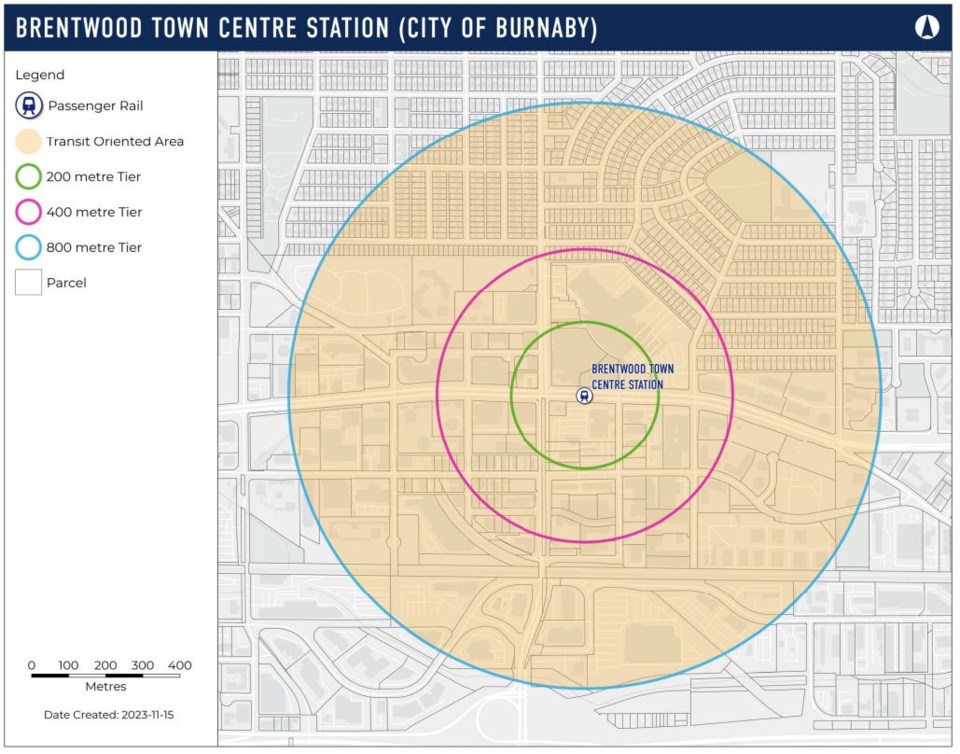The Editor,
Re: 'Inevitable decimation': Burnaby residents petition against B.C.'s transit-oriented housing rules (April 26, 2024)
It is with considerable dismay, but with completely predictable consequences that the hugely congenial Brentlawn neighbourhood is being whacked by the province’s recently adopted urban planning sledgehammer.
Without doubt in my many decades of urban planning and development experience here in Canada and around the world have we ever seen such a complete upending of the fabric of many communities in B.C. that have long pursued responsible development.
Let’s not forget the profession of urban planning emerged to balance the needs of the community and the development industry to achieve workable outcomes that would stand the test-of-time.
What the province has done is just the reverse by pretending that the world is flat and every piece of land near a SkyTrain station is exactly the same and should be treated identically regardless of the long-history of what makes that particular community viable.
And I must take serious issue with those few vocal parties that have suggested a free-lunch exists here with just upzoning land for more density has no real economic consequence.
Economic principles around land-use development have long made clear that cohesiveness of development that creates community is where the highest value can be achieved, and without democratic support for local change then contention will emerge. And with that contention, rancour will ensue, delays will happen, and economic potential value-added invariably will be reduced.
In short, communities generate economic value-added based on more than just raw land availability, but from how the community is put together, which takes many parts, the most important of which is effective local planning leadership by the presiding municipal council supported by experienced planning staff.
This recipe works all over the world, but it seems B.C. is now somehow different with its top-down sledgehammer than what continues to work pretty much everywhere else.
Serious issues also arise from the adoption of this sledgehammer approach to addressing the needs of communities not just for housing, but for all other related development needs such as schools, parks, recreation facilities, commercial and industrial support activities, and even the desire for long-standing residents to be just left alone.
And the meagre $1 billion over the next 10 years promoted by the province for accompanying infrastructure like roads, underground utilities and similar essential pre-qualifications for development will simply mean that development doesn’t happen without someone else footing the bill.
And for the general public, what this really means is even more concentrated developer power who will need to acquire many more sites to spread out the costs of infrastructure within a development area. So much for the province thinking that Bill 47 will somehow address affordability, which will take a back seat to developers needing to cover their additional utility cost risks with higher sales prices.
We also need to consider whether the actions of this government beg the question whether a democratic deficit exists in the introduction of the three housing oriented bills last December that fundamentally will upend how many B.C. communities will evolve over time.
None of these possible legislative policy outcomes were raised in the last provincial election by the prior government in seeking re-election. The housing crisis is at least two-decades in the making, and the changes arising especially with the Transit-Oriented Housing Act will take decades more to be implemented.
So what was the rush, other than the obvious headlines and upcoming campaign slogans. Instead, the province can and must suspend the Transit-Oriented regulations until a fulsome consultation occurs with all of civil society on what should happen over the next two centuries that the transit-oriented design legislation will drive.
Unfortunately, without a pause, my nearby neighbours in Brentlawn are left to fight on their own an uphill battle with the province. The hands of the City of Burnaby are completely tied as they cannot meaningfully help to alter these directives, other than with political calls for a more reasonable outcome.
This is not just a fight for the future of Brentlawn so please share your views with City of Burnaby council and your local MLA on whether you agree or not to using a sledgehammer to alter the urban fabric, without a stitch of prior consultation.
- Joe Sulmona, Burnaby





